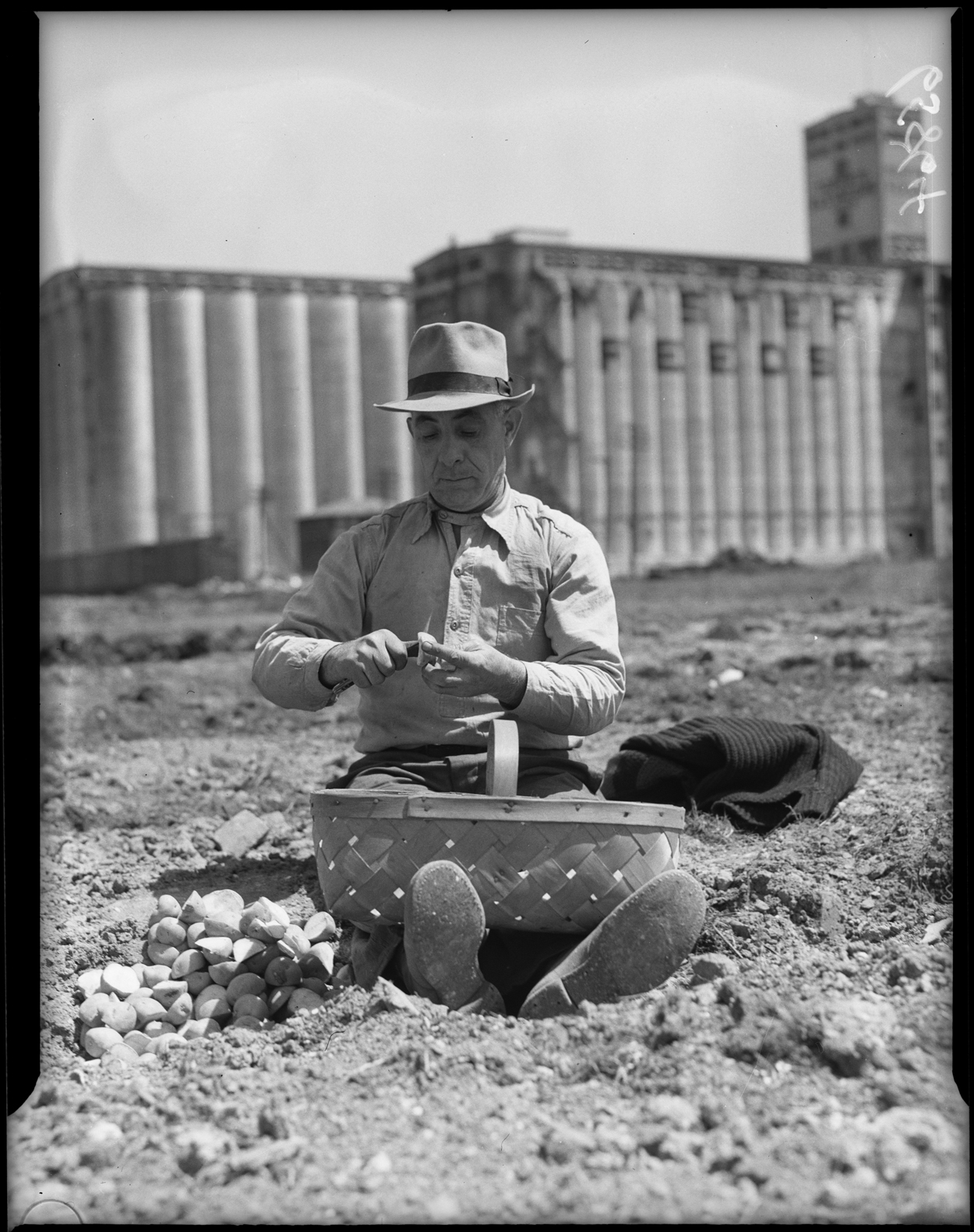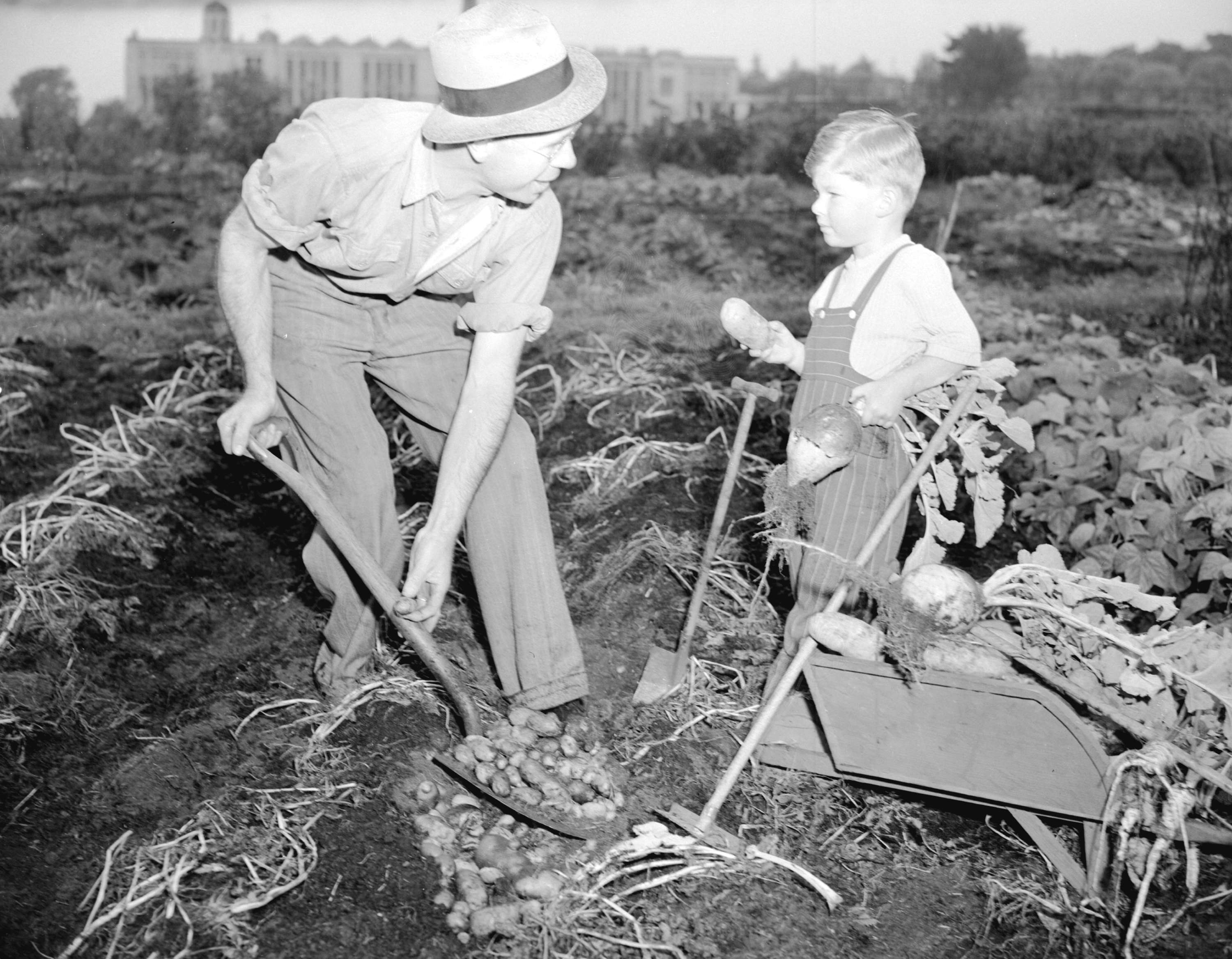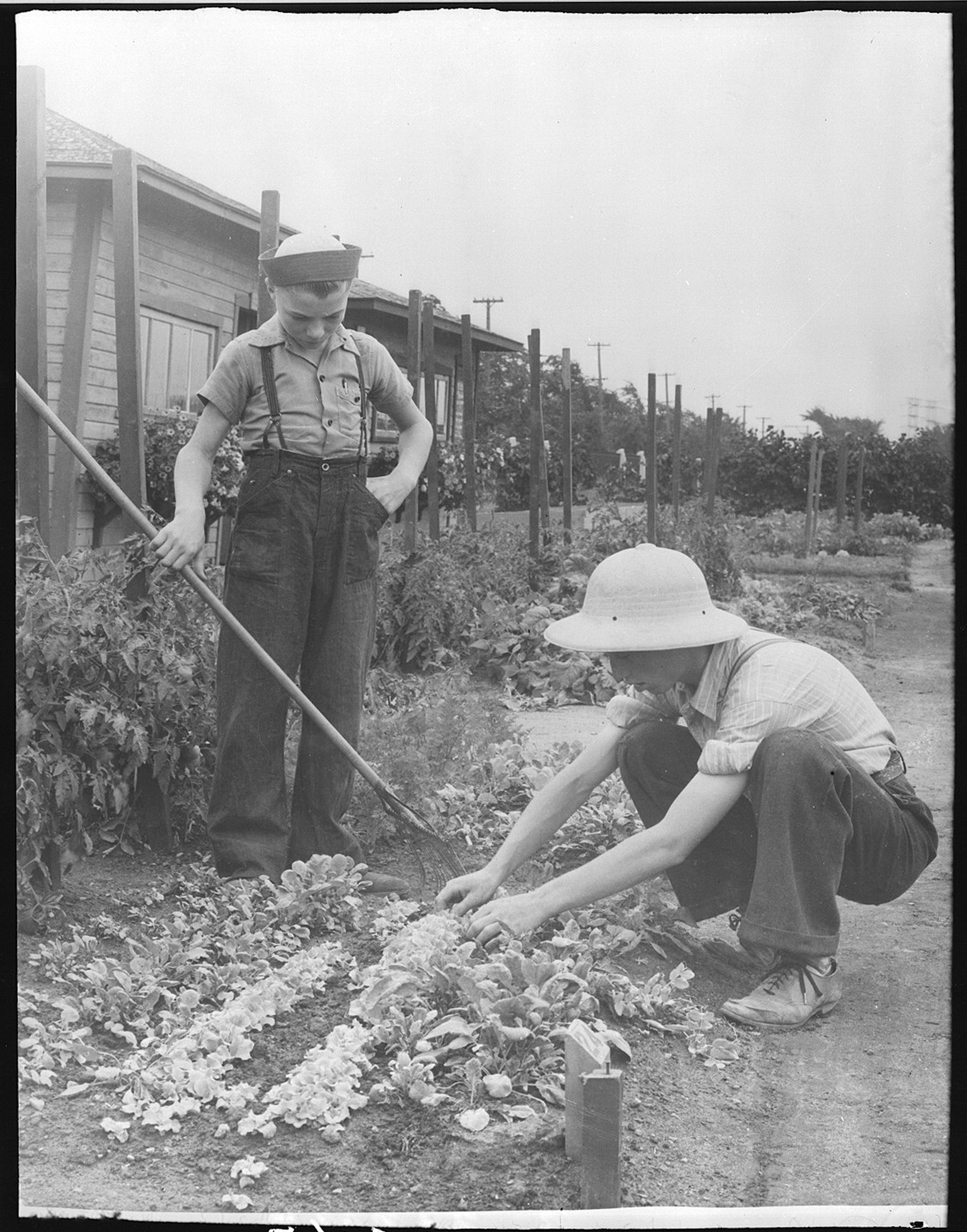
Background
While victory gardening occurred during both world wars, there is far less research on the practice during the First World War. Nonetheless, it’s clear that “war gardening,” as it was more commonly known, was widely promoted throughout the First World War by both the Canadian government and the media as a patriotic form of wholesome leisure. Indeed, the basic idea behind victory and First World War-era war gardening was much the same: the more produce that could be grown by Canadians in their front yards, vacant lots and former flower gardens, the more food, soldiers and munitions that could be shipped to Canada’s allies overseas. This was because not only did victory gardening help to meet existing export commitments, but it also freed railcars and transport trucks to move other strategic goods instead of food. That victory garden produce was also part of a healthy diet according to the newly created Canada’s Official Food Rules (1942) — the precursor to Canada’s Food Guide — was simply an added bonus.

Victory gardens therefore offered Canadians what seemed like a direct role in meeting the nation’s ambitious agricultural production goals while at the same time promising very tangible material, moral and health benefits. By as early as spring 1940, planting a victory garden emerged as a popular form of wholesome, patriotic leisure that many argued strengthened families and enlisted their untapped productive potential. At its 1944 peak, it was estimated that upwards of 209,200 victory gardens were in operation nationwide producing a total of 57,000 tonnes of vegetables.
Opposition
Despite Canadians’ early enthusiasm for victory gardening, the federal government was not always a strong proponent of the practice. In fact, up to the middle of the war, officials in the Department of Agriculture felt that inexperienced gardeners were likely to waste valuable commodities in short supply. One 1942 pamphlet produced by the Department went so far as to actively discourage unskilled “city-folk” from planting food gardens because “they would create the demand for equipment such as garden tools, fertilizers and sprays, which are made from materials needed by Canada’s war industries and because Canada’s vegetable seed supply can best be employed by experienced gardeners with equipment on hand.” By 1943, however, agriculture officials reversed their position in the face of considerable protest by the country’s avid gardeners and an end to the threat of a vegetable seed shortage.
Demographics
In many ways, the typical victory gardener was precisely the kind of “city folk” the Department of Agriculture had tried to discourage in the early years of the war. Home food production, after all, was already a common practice throughout rural Canada and the transformation of pre-war kitchen gardens to victory gardens was, in most rural areas, largely in name only. Because the goal was to increase the acreage of land devoted to food production, the ideal victory garden was one that transformed urban land into agricultural space. Municipalities, private owners of vacant land and even grassroots organizations around the country like Victoria’s Victory Garden Brigade or the Community Garden League of Greater Montréal offered up land to gardeners, usually for a small annual fee.
Despite these efforts to create public spaces for gardening open to everyone, victory gardening appears to have been most common among better-off, urban homeowners. According to the most extensive wartime survey of wartime victory gardens, 82 per cent were being cultivated at the home of the householder, 15 per cent were in a nearby vacant lot and only 3 per cent were in a community garden area. In fact, some believed that victory gardening on vacant public lands never even reached the levels of the relief gardens planted during the Great Depression. In Québec City and Toronto, for instance, it was estimated that the acreage tilled by victory gardeners on public lands in 1943 was only 25 and 50 per cent, respectively, of the land that had been under cultivation by Depression era relief gardeners. According to one investigator, the message was clear: “the appeal to patriotism together with individual fears of possible food shortages were not as potent as absolute necessity in promoting home gardening.”
Not only was the typical victory garden usually planted on private property, but they were also often being tended by inexperienced gardeners. This was partly reflected in the prescriptive literature about victory gardens as well as by the prominence of new entrants into the garden, particularly young children and men. For many proponents of victory gardening, the movement of amateurs into the field of gardening was one of the campaign’s benefits: it was teaching Canadians a new set of domestic skills which, in the process, increased their self-sufficiency and encouraged them to gain new respect for farmers and other food producers. For the government, though, it pointed to the potential waste inherent in the practice.
Significance
In the end, though, the real value of victory gardens lay in their importance as a symbolic, rather than as a purely productive, activity — something that the government began to recognize by 1943. From a morale standpoint, victory gardens linked a wholesome and familiar form of domestic labour to a larger war effort in a way that could both include the entire family, and was also highly visible to friends and neighbours. The victory garden, in other words, provided a powerful domestic venue for home-front participation in the larger war effort and, for many, an enjoyable diversion from the less pleasant realities of total war.

 Share on Facebook
Share on Facebook Share on X
Share on X Share by Email
Share by Email Share on Google Classroom
Share on Google Classroom






